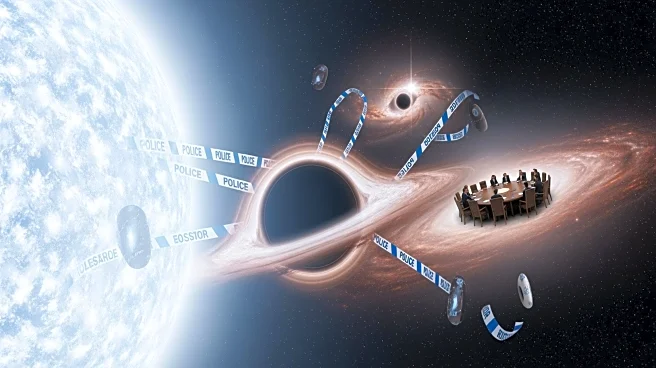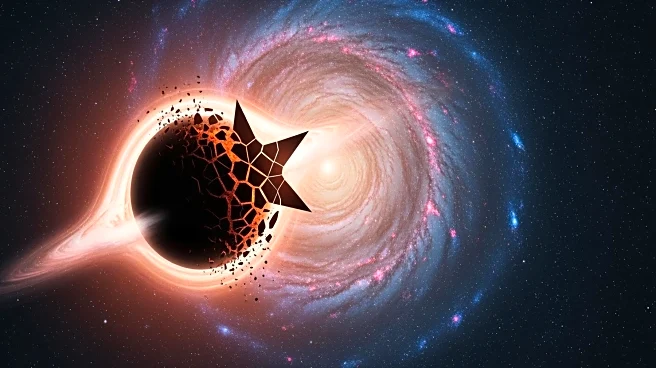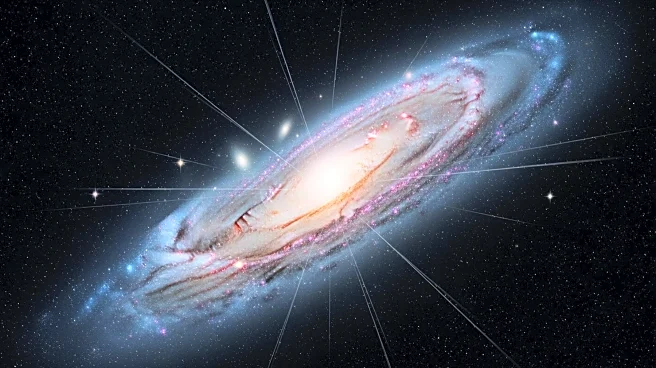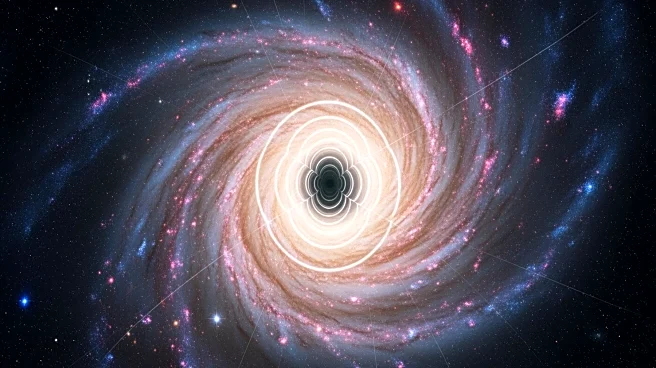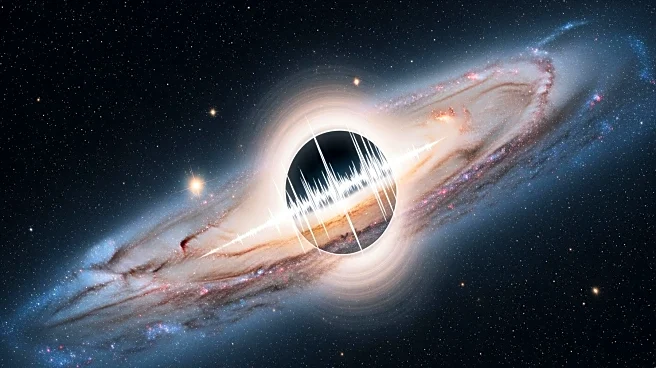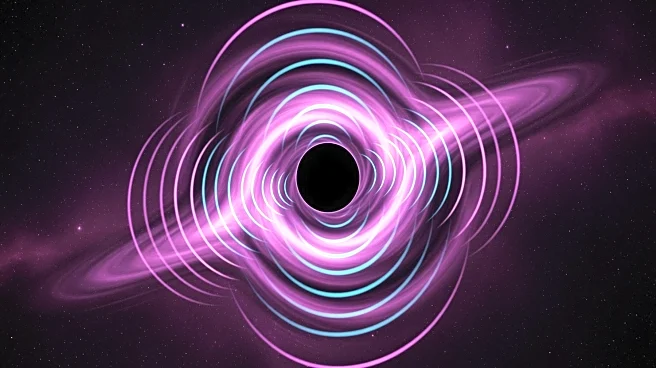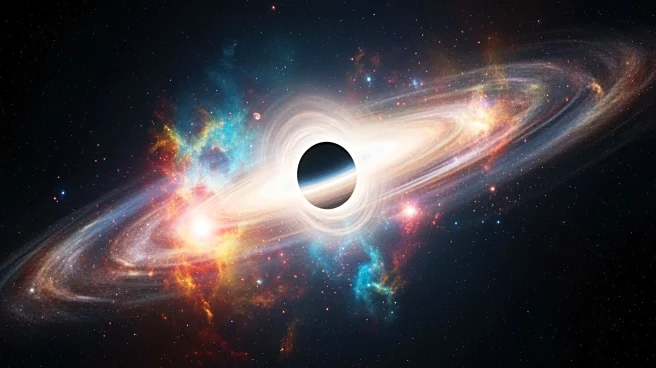What's Happening?
An international team of astronomers has detected a unique cosmic event involving a black hole tearing apart a star, marked by radio signals. This event, known as a radio-bright tidal disruption event (TDE),
was observed outside a galaxy's center, a rare occurrence. The U.S. National Science Foundation National Radio Astronomy Observatory (NSF NRAO) and other telescopes captured the anomaly, designated AT 2024tvd, which is the fastest-evolving radio signal of its kind. Led by Itai Sfaradi and Raffaella Margutti from the University of California, Berkeley, the discovery provides new insights into the behavior of massive black holes. Typically, such events occur at the center of galaxies, but AT 2024tvd was found approximately 2,600 light-years away from its host galaxy's center. The radio monitoring revealed two distinct flares with unique evolution timescales, offering a deeper understanding of material behavior near black holes.
Why It's Important?
This discovery is significant for astrophysics as it challenges existing theories about the location and behavior of tidal disruption events. By observing a TDE away from a galaxy's center, scientists gain a better understanding of how black holes interact with their surroundings. The rapid evolution of the radio signals provides valuable data on the dynamics of material ejected by black holes, which could lead to advancements in the study of cosmic phenomena. This event also highlights the capabilities of modern radio telescopes in detecting and analyzing distant cosmic events, potentially leading to more discoveries that could reshape our understanding of the universe.
What's Next?
The research team plans to use higher-resolution radio imaging to further study the event and detect similar occurrences in our galaxy. This could provide more detailed insights into the mechanisms behind tidal disruption events and the behavior of black holes. Continued monitoring and analysis may reveal whether the second radio flare was produced by the same material accretion as the first, offering clues about the episodic nature of black hole activity. These findings could influence future research directions in astrophysics and the development of new technologies for observing cosmic events.
Beyond the Headlines
The discovery raises questions about the distribution and frequency of tidal disruption events outside galaxy centers, potentially altering our understanding of black hole demographics. It also prompts ethical considerations regarding the allocation of resources for space exploration and the prioritization of scientific research. As astronomers continue to uncover the mysteries of the universe, the cultural impact of such discoveries may inspire new generations to pursue careers in science and technology.
